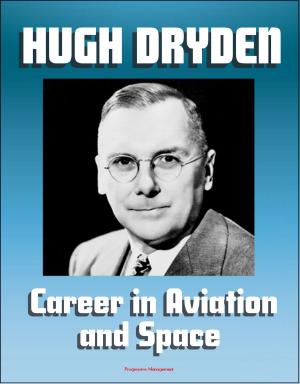A History of Sea-Air Aviation: Wings Over The Ocean - Chronicling the History of Sea-Air Flight Operations, Early Aviation History, World War II Naval Aviation, Chanute, Curtiss, Lindbergh
Nonfiction, History, Military, Aviation| Author: | Progressive Management | ISBN: | 9781301901142 |
| Publisher: | Progressive Management | Publication: | February 1, 2013 |
| Imprint: | Smashwords Edition | Language: | English |
| Author: | Progressive Management |
| ISBN: | 9781301901142 |
| Publisher: | Progressive Management |
| Publication: | February 1, 2013 |
| Imprint: | Smashwords Edition |
| Language: | English |
This is a unique view of the history of naval aviation, starting with early aviation, up to the late 1970s. Topics and subjects covered include: Count Ferdinand Von Zeppelin; early aviation history; ornithopter; Clement Auer; Octave Chanute; Samuel P. Langley; Wilbur and Orville Wright; Glenn Curtiss; Transoceanic flight; the flight of NC-4; Charles Lindbergh; Dole Pineapple Derby; Hindenburg; Ford Tri-motor; Dornier Wal (Whale); Boeing 314; Pan American Airways; Balloons in the civil war; Gotha Biplane; Shenandoah crash; Akron and Macon crashes; U.S. and British Aircraft carriers; and Japanese aircraft carriers.
Almost five years after he and his brother made their historic flights at Kitty Hawk, N.C., Wilbur Wright addressed a group of French aviation enthusiasts in Paris. He told his audience that he sometimes thought that "the desire to fly after the fashion of birds is an ideal handed down to us by our ancestors who, in their grueling travels across trackless land in prehistoric times, looked enviously on the birds soaring freely through space, at full speed, above all obstacles, on the infinite highway of the air." Although he did not elaborate upon this idea in the rest of his speech, Wilbur Wright clearly wanted to emphasize two aspects of the age-old desire to fly. On the one hand, he contrasted early man's laborious and grueling manner of travel with the seemingly effortless flight of birds. On the other hand, the elder Wright brother placed equal emphasis on the mobility inherent in the flight of birds and, again, the implied contrast with the lack of geographical freedom which limited humans. How easily the winged creatures could cross vast expanses of land or water; how difficult for man to do the same. But by 1908, when Wilbur Wright delivered this speech, both he and his brother had experienced in their flying machine the freedom and mobility which had so fired the imaginations of our ancestors.
Wilbur Wright also told the members of the Aero-Club de France that the idea of flight was "an idea that has always impassioned mankind." He did not need to give examples or evidence of the accuracy of this observation, for the proof was there in the members of his audience. They shared this passion for flight. Had he felt compelled to justify his assertion, Wilbur Wright could have pointed to the winged gods and deities of ancient Egypt, Assyria. Greece and Rome. Or he could have mentioned Western religious art with its winged angels and cherubs. Since he was a widely-read man. particularly in the literature relating to aviation. Wilbur Wright might even have produced examples of the desire to fly in Oriental art and religions. But the intense and taciturn Mr. Wright did none of these things. He assumed, instead, that his audience shared this ancient dream of flight.
This is a unique view of the history of naval aviation, starting with early aviation, up to the late 1970s. Topics and subjects covered include: Count Ferdinand Von Zeppelin; early aviation history; ornithopter; Clement Auer; Octave Chanute; Samuel P. Langley; Wilbur and Orville Wright; Glenn Curtiss; Transoceanic flight; the flight of NC-4; Charles Lindbergh; Dole Pineapple Derby; Hindenburg; Ford Tri-motor; Dornier Wal (Whale); Boeing 314; Pan American Airways; Balloons in the civil war; Gotha Biplane; Shenandoah crash; Akron and Macon crashes; U.S. and British Aircraft carriers; and Japanese aircraft carriers.
Almost five years after he and his brother made their historic flights at Kitty Hawk, N.C., Wilbur Wright addressed a group of French aviation enthusiasts in Paris. He told his audience that he sometimes thought that "the desire to fly after the fashion of birds is an ideal handed down to us by our ancestors who, in their grueling travels across trackless land in prehistoric times, looked enviously on the birds soaring freely through space, at full speed, above all obstacles, on the infinite highway of the air." Although he did not elaborate upon this idea in the rest of his speech, Wilbur Wright clearly wanted to emphasize two aspects of the age-old desire to fly. On the one hand, he contrasted early man's laborious and grueling manner of travel with the seemingly effortless flight of birds. On the other hand, the elder Wright brother placed equal emphasis on the mobility inherent in the flight of birds and, again, the implied contrast with the lack of geographical freedom which limited humans. How easily the winged creatures could cross vast expanses of land or water; how difficult for man to do the same. But by 1908, when Wilbur Wright delivered this speech, both he and his brother had experienced in their flying machine the freedom and mobility which had so fired the imaginations of our ancestors.
Wilbur Wright also told the members of the Aero-Club de France that the idea of flight was "an idea that has always impassioned mankind." He did not need to give examples or evidence of the accuracy of this observation, for the proof was there in the members of his audience. They shared this passion for flight. Had he felt compelled to justify his assertion, Wilbur Wright could have pointed to the winged gods and deities of ancient Egypt, Assyria. Greece and Rome. Or he could have mentioned Western religious art with its winged angels and cherubs. Since he was a widely-read man. particularly in the literature relating to aviation. Wilbur Wright might even have produced examples of the desire to fly in Oriental art and religions. But the intense and taciturn Mr. Wright did none of these things. He assumed, instead, that his audience shared this ancient dream of flight.















